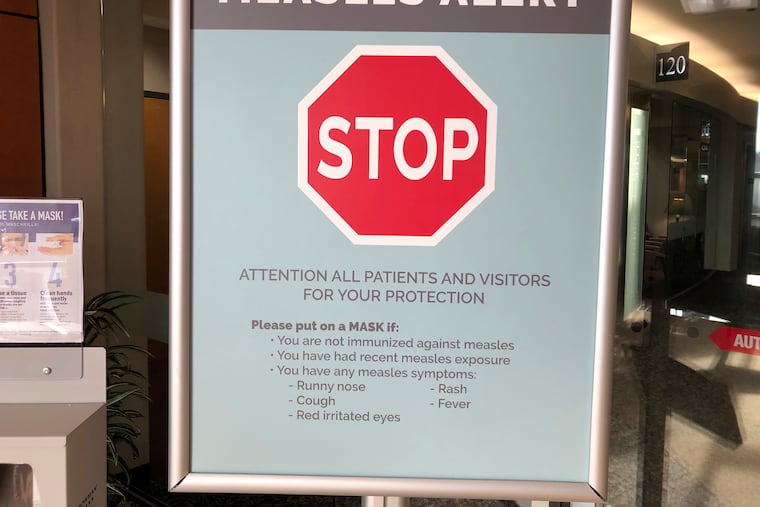Washington measles outbreak: Why we should fear this vaccine-preventable disease
What will it take for us to realize that our rights as U.S. citizens shouldn’t extend to allowing children to catch and transmit potentially fatal infections? A leading vaccine scientist suggests some alarming possibilities.

Measles is back.
As of Feb. 7, 55 cases of measles had been confirmed in Washington state. Almost all of the cases occurred in children younger than 10 whose parents had chosen not to vaccinate them. In response, the governor of Washington, Jay Inslee, declared a state of emergency.
The Washington state outbreak isn’t an isolated event. During the past few years, outbreaks of measles have occurred in New York, Minnesota, and California. The California outbreak spread into 25 states as well as Mexico and California and affected 189 people. Again, mostly children. And again, because their parents had chosen not to vaccinate them.
Why?
The simple answer is that we no longer fear the disease. But we should. Before the measles vaccine was introduced more than five decades ago, every year millions of American children suffered from measles, 48,000 were hospitalized, and 500 died. Typically, children died from severe pneumonia or dehydration. Less commonly, they died from encephalitis, when measles virus infected the brain. There was then and remains today no effective treatment for measles virus.
With the invention of a measles vaccine, however, all of that suffering and death disappeared. By 2000, measles was eliminated from our country. The only cases of measles that have occurred since 2000 were in people who traveled to the United States from countries where measles was common, like the Philippines. But the virus didn’t spread here because people were vaccinated.
If these new outbreaks aren’t enough to sway lawmakers to act — to clamp down on state vaccine exemptions that are far too easy to obtain and far too prevalent — what will? What will it take for us to realize that our rights as U.S. citizens shouldn’t extend to allowing children to catch and transmit potentially fatal infections? I offer three frightening possibilities:
First, children are going to have to die. Right now, several hundred children a year are infected with measles. If we get to a few thousand cases a year, parents will once again be forced to watch children die needlessly from this disease.
Second, we experience the reemergence of other diseases that have been eliminated from this country — like polio or diphtheria. Polio is a perfect example. Only about 1 of every 200 people who are infected with poliovirus are paralyzed. Many of those infected are unknowingly shedding poliovirus in their stools. Because international travel is common, and because polio still occurs in the world, it is likely that people walk into international airports every year shedding poliovirus. If immunization rates drop far enough, polio could come back.
Third, measles vaccine is given in combination with mumps and rubella vaccines. If parents aren’t giving children the measles vaccine, they also aren’t giving them a vaccine to prevent two other viral diseases. Although we eliminated rubella infections from the U.S. by 2005, there is no reason that rubella couldn’t come back. And if it does, the devastation caused by rubella will become obvious far more quickly than with measles.
Pregnant women who contract rubella during the first trimester have an 85 percent chance of delivering a child with severe, permanent defects of the eyes, ears, or heart. Before a rubella vaccine became available in 1969, one outbreak in Philadelphia in the early 1960s caused hundreds of spontaneous abortions, elective abortions, and children who were permanently disabled. Think of the fear engendered when Zika virus spread from South America into several southern states. People were horrified by television images of babies with abnormally small heads. But Zika virus, which causes birth defects in about 15 percent of first trimester infections, isn’t nearly as efficient at causing harm as rubella.
Recently, in response to the Washington state measles outbreak, legislators held a public hearing to consider a bill to prevent unvaccinated children from entering public schools. To protest the bill, hundreds of anti-vaccine activists showed up, many from out of state. What these activists fail to realize, however, is that bills designed to increase immunization rates aren’t their enemy. Outbreaks of potentially fatal diseases, which have now swung popular opinion against them, are their enemy. And there is only one way to defeat outbreaks.
Paul A. Offit, MD, is the director of the Vaccine Education Center at the Children’s Hospital of Philadelphia and a professor of pediatrics at the Perelman School of Medicine at the University of Pennsylvania.